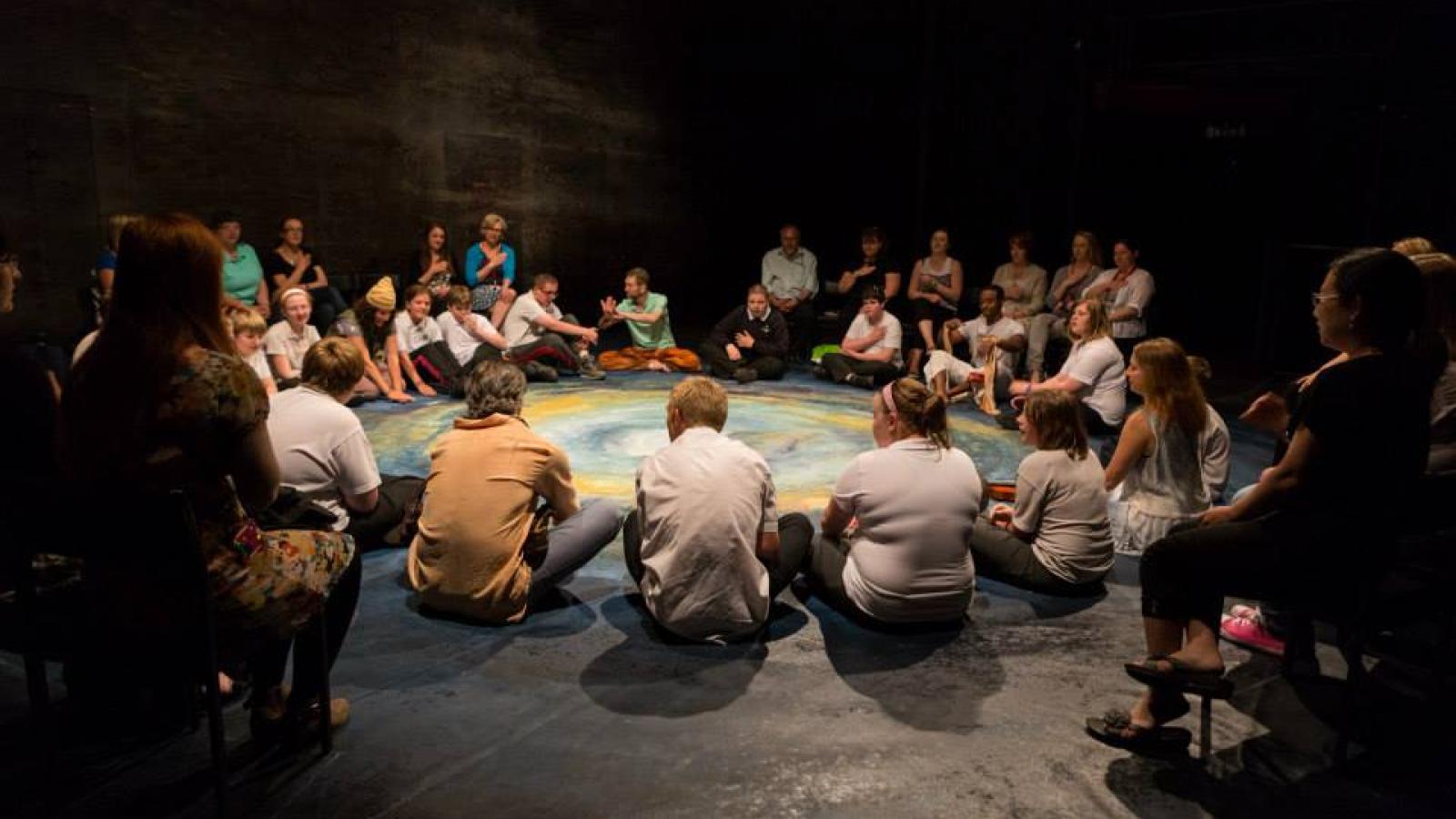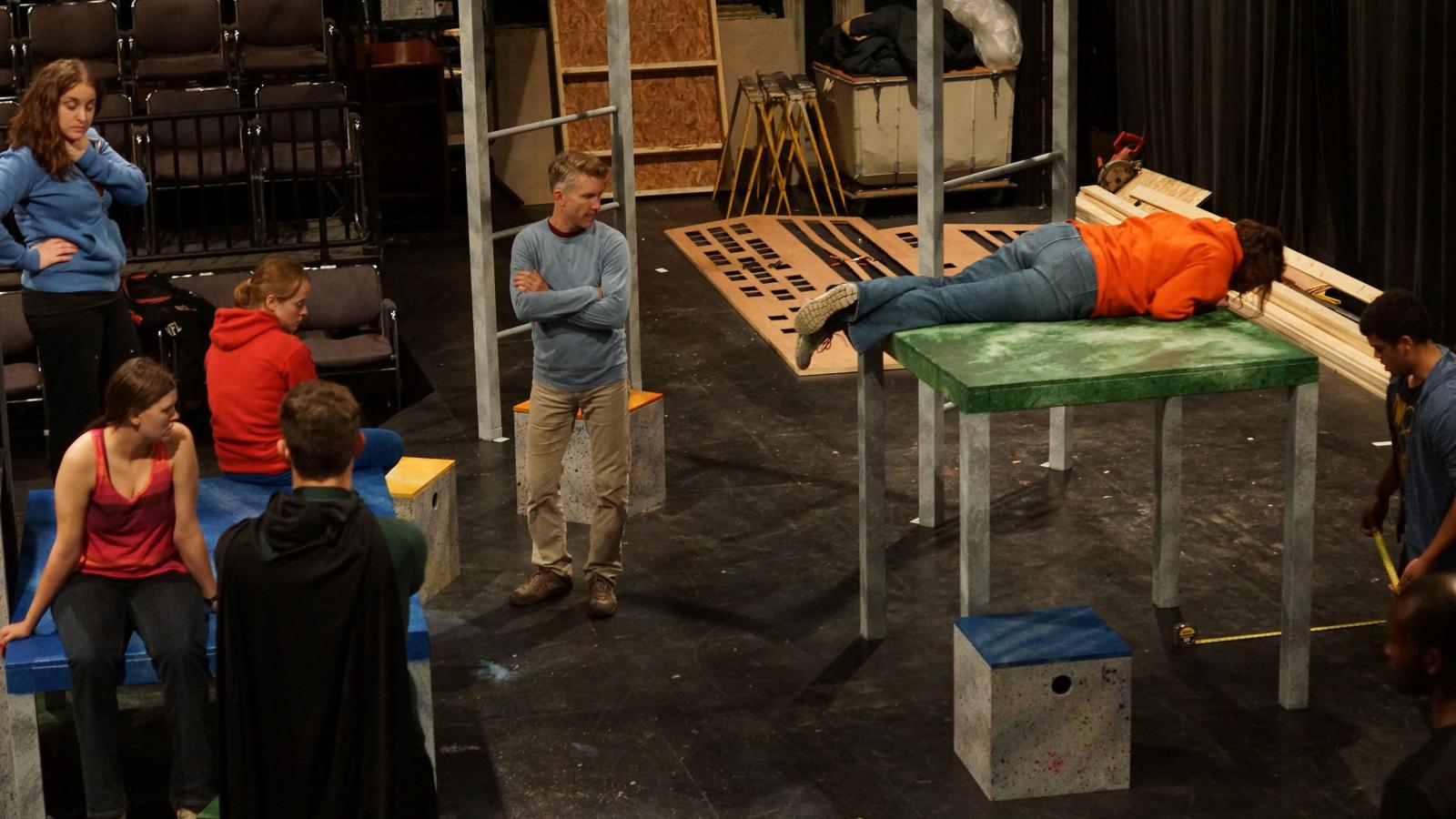Pilot Project
In 2011, as part of The Ohio State University's collaborative partnership with the Royal Shakespeare Company, Kelly Hunter brought her Hunter Heartbeat Method to Ohio State.
Hunter collaborated with Visiting Assistant Professor Robin Post and Professor Marc Tasse, director of the Nisonger Center, to launch a 10-week pilot study of the effectiveness of the Hunter Heartbeat Method with a group of 14 children. Hunter and Post trained team of Ohio State students in the method. This group played the games in a workshop setting with the children once a week. The Nisonger Center's research team, led by Dr. Tasse and PhD Student Margaret Mehling, tested the children throughout the process.
Immediate anecdotal evidence was positive, as was the initial research data suggesting that the Hunter Heartbeat Method could be an effective intervention in targeting the communicative blocks of autism. Based on this pilot research project, the Nisonger Center decided to launch a 42-week intensive research project.
In Here Out There
Acting students within the department's Master of Fine Arts program are required to participate in an Outreach and Engagement Performance Project, an exploration of the collaborative outreach and engagement process in the development of an original ensemble creation which emphasizes community themes. The nine actors, who were trained in the Hunter Heartbeat Method in June 2013, began working with children on the spectrum at the Haugland Learning Center in January 2014.
While participating in weekly workshops, the nine graduate student actors developed a performance piece as a theatrical response to the work. The student creators met multiple times with community partners at Haugland Learning Center for feedback on their developing script. After months of devising and daily rehearsals, In Here Out There opened in November 2014.
The piece explores the journey of thirteen-year-old Callie, a girl with autism, who is a bit of a tomboy with an obsession over superheroes. The play depicts some of her challenges and triumphs in connecting with others, as well as the rich inner world she created.
The closing performance was a sensory-friendly performance, modified for audiences with special needs, a first for Ohio State Theatre. Lights in the house were increased by 50% rather than completely turned off. Sudden and loud sounds were diminished or eliminated, as were strobe lights. Harsh stage lighting was also softened.
The production was remounted in May 2015 as part of the Shakespeare Education Festival, a celebration of a Ohio State's six-year partnership with the Royal Shakespeare Company.
The Tempest and Tempest-in-Action
As part of the Ohio State-RSC collaboration, the Department of Theatre commissioned Kelly Hunter to develop a production of The Tempest especially for children on the spectrum. This pioneering adaptation of The Tempest premiered in June 2014 at the Royal Shakespeare Company's Courtyard Theatre.
The adaptation is an 80-minute version that incorporates a new group of children on the autism spectrum in each performance. Sitting on the floor in a circle around a painted cloth with six actors, the group of children become active participants in the performance. The children's families, caregivers, friends, and other audience members sit just behind them while the actors invite the children to join in the performance. Together, the children and actors tell the story of The Tempest through sensory drama games created by Hunter. The children learn sections of the text in performance with the guidance and modeled behavior by the actors.
After its successful premiere in London, the production traveled to Ohio State where it was performed at the Performance Space at the Wexner Center for the Arts, Haugland Learning Center, and WOSU@COSI.
In May 2015, Ohio State Theatre produced Tempest-in-Action. Tempest-in-Action is a stripped-down version of The Tempest, performed without costumes, musical instrumentation, or lighting. It was produced as part of the Shakespeare and Education Festival. Ohio State graduate student actors were cast to replace the original Royal Shakespeare Company cast members. Tempest-in-Action was staged a second time in November 2015, coinciding with the establishment of the Patricia Heaton-Hunt and David Hunt Shakespeare and Autism Fund. Tempest-in-Action was further performed in London, Madrid and Barcelona, and Los Angeles.
Beyond Ohio State
Students, both graduate and undergraduate, who have participated in the Shakespeare and Autism Project have found work at places such as Columbus Children's Theatre, Cincinnati Shakespeare Company, and The Learning Spectrum.



